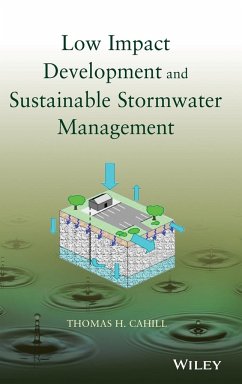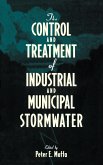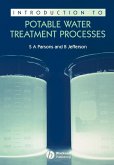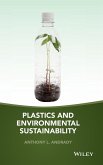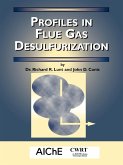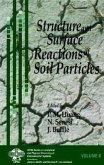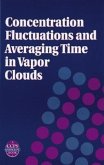Thomas H Cahill
Sustainable Stormwater
Thomas H Cahill
Sustainable Stormwater
- Gebundenes Buch
- Merkliste
- Auf die Merkliste
- Bewerten Bewerten
- Teilen
- Produkt teilen
- Produkterinnerung
- Produkterinnerung
The comprehensive guide to understanding and implementing sustainable stormwater solutions A practical introductory look at the methods and materials used in twenty-first century site design, Low Impact Development and Sustainable Stormwater Management familiarizes readers with new and emerging ideas and techniques for using rainfall runoff in a more ecologically friendly fashion. Since rainfall is the ultimate source of our water supply, treating it as a finite resource is critical if we are to meet current and future human water needs, and this reference volume explains how. Providing…mehr
Andere Kunden interessierten sich auch für
![The Control and Treatment of Industrial and Municipal Stormwater The Control and Treatment of Industrial and Municipal Stormwater]() The Control and Treatment of Industrial and Municipal Stormwater263,99 €
The Control and Treatment of Industrial and Municipal Stormwater263,99 €![Introduction to Potable Water Treatment Processes Introduction to Potable Water Treatment Processes]() Simon ParsonsIntroduction to Potable Water Treatment Processes86,99 €
Simon ParsonsIntroduction to Potable Water Treatment Processes86,99 €![Plastics and Environmental Sustainability Plastics and Environmental Sustainability]() Anthony L AndradyPlastics and Environmental Sustainability123,99 €
Anthony L AndradyPlastics and Environmental Sustainability123,99 €![Profiles in Flue Gas Desulfurization Profiles in Flue Gas Desulfurization]() Richard R LuntProfiles in Flue Gas Desulfurization246,99 €
Richard R LuntProfiles in Flue Gas Desulfurization246,99 €![Structure and Surface Reactions of Soil Particles Structure and Surface Reactions of Soil Particles]() Structure and Surface Reactions of Soil Particles642,99 €
Structure and Surface Reactions of Soil Particles642,99 €![The Chemistry of Pollution The Chemistry of Pollution]() Günter FellenbergThe Chemistry of Pollution173,99 €
Günter FellenbergThe Chemistry of Pollution173,99 €![Concentration Fluctuations and Averaging Time in Vapor Clouds Concentration Fluctuations and Averaging Time in Vapor Clouds]() David J WilsonConcentration Fluctuations and Averaging Time in Vapor Clouds182,99 €
David J WilsonConcentration Fluctuations and Averaging Time in Vapor Clouds182,99 €-
-
-
The comprehensive guide to understanding and implementing sustainable stormwater solutions A practical introductory look at the methods and materials used in twenty-first century site design, Low Impact Development and Sustainable Stormwater Management familiarizes readers with new and emerging ideas and techniques for using rainfall runoff in a more ecologically friendly fashion. Since rainfall is the ultimate source of our water supply, treating it as a finite resource is critical if we are to meet current and future human water needs, and this reference volume explains how. Providing detailed coverage of the design process and construction concerns related to sustainable stormwater management, the book illustrates concepts through the extensive use of photographs, real-world examples of built projects, and engineering details and calculations, including worksheets and specifications. Proposing and presenting innovative engineering design ideas that differ from traditional approaches to stormwater management techniques, including maximizing vegetative cover and the use of infiltration systems, the book is a comprehensive reference on ecologically sustainable approaches to making the most of rainfall. Multidisciplinary in its approach, Low Impact Development and Sustainable Stormwater Management presents insights from landscape architects, planners, and scientists, making it an indispensible resource for anyone interested in managing rainfall runoff, from engineers and designers to developers, regulators, and students.
Hinweis: Dieser Artikel kann nur an eine deutsche Lieferadresse ausgeliefert werden.
Hinweis: Dieser Artikel kann nur an eine deutsche Lieferadresse ausgeliefert werden.
Produktdetails
- Produktdetails
- Verlag: Wiley
- Seitenzahl: 312
- Erscheinungstermin: 31. Juli 2012
- Englisch
- Abmessung: 240mm x 161mm x 21mm
- Gewicht: 630g
- ISBN-13: 9780470096758
- ISBN-10: 0470096756
- Artikelnr.: 23594058
- Herstellerkennzeichnung
- Libri GmbH
- Europaallee 1
- 36244 Bad Hersfeld
- gpsr@libri.de
- Verlag: Wiley
- Seitenzahl: 312
- Erscheinungstermin: 31. Juli 2012
- Englisch
- Abmessung: 240mm x 161mm x 21mm
- Gewicht: 630g
- ISBN-13: 9780470096758
- ISBN-10: 0470096756
- Artikelnr.: 23594058
- Herstellerkennzeichnung
- Libri GmbH
- Europaallee 1
- 36244 Bad Hersfeld
- gpsr@libri.de
THOMAS H. CAHILL is the Principal Environmental Engineer and President of Cahill Associates. He has over forty-two years of professional experience in water resources engineering, hydrology, hydraulics, natural resource planning, and environmental engineering, including over thirty years in private practice. Mr. Cahill is the author of over 100 technical papers and publications on land use, stormwater management, and water quality, and is a frequent lecturer at environmental and engineering conferences.
Prologue: Habitat, Sustainability, and Stormwater Management xi
Acknowledgments xiii
1 Rainwater as the Resource 1
1.1 The Water Balance as a Guide for Sustainable Design 1
1.2 The Water Balance by Region 7
1.3 Arid Environments: The Southern California Model 11
The Energy Demand for Water in Southern California 13
1.4 The Altered Water Balance and Hydrologic Impacts 16
Imperviousness 16
Increased Volume of Runoff 20
1.5 The Impacts of Development on the Hydrologic Cycle 24
Reduced Groundwater Recharge 24
Reduced Stream Base Flow 25
Altered Stream Channel Morphology 26
Water Supply Impacts 26
1.6 The Historic Approach: Detention System Design 27
1.7 Stormwater Volume Methodologies 30
2 Stormwater Hydrology and Quality 33
2.1 Overland Flow: The Beginning of Runoff 33
2.2 Regional Hydrology 35
Wetlands 36
First-Order Streams 38
2.3 Stormwater Volume 39
2.4 The Water Quality Impacts of Land Development 40
Increased Pollutants in Urban Runoff 43
2.5 The Chemistry of Urban Runoff Pollution 44
2.6 Understanding Pollutant Transport in Stormwater 47
Stormwater Quantity and Quality 47
Particulates 48
Solutes 49
3 Land as the Resource 51
3.1 Historic Patterns of Land Development 51
3.2 Sustainable Site Design 58
3.3 Watershed Setting and Physical Context 58
3.4 Smart Growth Issues 59
Changes Related to Development 59
3.5 Conflict between Desired Land Use and Sustainability 61
3.6 Physical Determinants of Land Development 62
Geology 62
Physiography 65
Topography 66
Soil and Subsurface Conditions 67
3.7 Urban Communities with Combined Sewer Overflows 68
End of the Sewer 71
Other Urban Infrastructure 73
3.8 The Living Building and Zero Net Water Use 74
4 The Planning Process for LID 79
4.1 Sustainable Site Planning Process with Stormwater Management 79
Guideline 1: Understand the Site 79
Guideline 2: Apply LID Conservation Design 80
Guideline 3: Manage Rainfall Where It Originates 81
Guideline 4: Design with Operation and Maintenance in Mind 83
Guideline 5: Calculate Runoff Volume Increase and Water Quality Impacts 85
4.2 Overview of the Site Design Process for LID 86
5 The Legal Basis for LID: Regulatory Standards and LID Design Criteria 95
5.1 The Land-Water Legal Process 95
Common Law 95
Federal Water Quality Law 96
Federal Land Use Law 97
5.2 The Evolution of Land Development Regulation 98
5.3 The Regulatory Framework 100
Pennsylvania Land Use Law 101
Pennsylvania Water Law 102
California Land Use Law 103
California Water Law 104
5.4 Stormwater Management Regulations 105
Volume Control 105
Volume Control Criteria 106
Volume Control Guideline 108
Peak-Rate Control Guideline 108
Water Quality Protection Guideline 109
Stormwater Standards for Special Areas 110
Legal Implications of Green Infrastructure 110
6 LID Design Calculations and Methodology 113
6.1 Introduction to Stormwater Methodologies 113
6.2 Existing Methodologies for Runoff Volume Calculations 114
Runoff Curve Number Method 114
Small Storm Hydrology Method 117
Infiltration Models for Runoff Calculations 119
Urban Runoff Quality Management 119
6.3 Existing Methodologies for Peak-Rate/Hydrograph Estimates 120
The Rational Method 120
The NRCS (SCS) Unit Hydrograph Method 120
6.4 Computer Models 121
The HEC Hydrologic Modeling System 121
The SCS/NRCS Models: WinTR-20 and WinTR-55 121
The Stormwater Management Model 122
The Source Loading and Management Model 122
Continuous Modeling 123
6.5 Precipitation Data for Stormwater Calculations 123
6.6 Accounting for the Benefits of LID: Linking Volume and Peak Rate 124
6.7 Recommended LID Stormwater Calculation Methodology 124
Methods Involving No Routing 125
Methods Involving Routing 126
6.8 Nonstructural BMP Credits 127
7 Design of LID Systems 131
7.1 Nonstructural Measures 131
Impervious Surface Reduction 131
Limitation of Site Disturbance 132
Site Design with Less Space 132
7.2 Structural Measures 133
7.3 Pervious Pavement with an Infiltration or Storage Bed 134
Types of Porous Pavement 134
Description and Function 136
Pervious Bituminous Asphalt 141
Pervious Portland Cement Concrete 141
Pervious Paver Blocks 141
Reinforced Turf 143
Other Porous Surfaces 144
Potential Applications 144
Pervious Pavement Walkways (Concrete and Asphalt) 144
Rooftop and Impervious Area Connections 144
Water Quality Mitigation 145
7.4 Bioremediation 145
Rain Garden: Design and Function 146
Primary Components of a Rain Garden System 147
7.5 Vegetated Roof Systems 152
Design and Function 154
Design Elements of a Vegetated Roof System 155
Types of Vegetated Roof Systems 155
Dual Media with a Synthetic Retention Layer 158
Potential Applications 158
7.6 Capture-Reuse 158
Rain Barrels and Cisterns 161
Vertical Storage 164
8 Structural Measures: Construction, Operation, and Maintenance 169
8.1 Porous Pavement Systems 169
Construction 169
Storage/Infiltration Bed Dimensions 174
Construction Staging 174
Operation and Maintenance 176
Vacuuming 177
Restoration of Porous Pavements 178
Cost of Porous Pavement 178
8.2 Bioremediation Systems 179
Rain Gardens 179
Construction of a Rain Garden 183
Maintenance of Rain Gardens 183
Cost of Rain Gardens 184
Vegetated Roof Systems 184
Construction of a Vegetated Roof 187
Maintenance of Vegetated Roofs 188
Cost of Vegetated Roofs 188
8.3 Capture-Reuse Systems 188
Construction 188
Volume Reduction 191
Peak-Rate Mitigation 191
Water Quality Mitigation 191
Appendix A: The Stormwater Calculation Process 193
Appendix B: Case Studies 213
B.1 The Transition from Research to Practice 213
B.2 Manuals 215
B.3 LID Manual for Michigan (2008) 219
B.4 Models and Watershed Studies 237
B.5 Design and Construction Projects 251
Index 283
Acknowledgments xiii
1 Rainwater as the Resource 1
1.1 The Water Balance as a Guide for Sustainable Design 1
1.2 The Water Balance by Region 7
1.3 Arid Environments: The Southern California Model 11
The Energy Demand for Water in Southern California 13
1.4 The Altered Water Balance and Hydrologic Impacts 16
Imperviousness 16
Increased Volume of Runoff 20
1.5 The Impacts of Development on the Hydrologic Cycle 24
Reduced Groundwater Recharge 24
Reduced Stream Base Flow 25
Altered Stream Channel Morphology 26
Water Supply Impacts 26
1.6 The Historic Approach: Detention System Design 27
1.7 Stormwater Volume Methodologies 30
2 Stormwater Hydrology and Quality 33
2.1 Overland Flow: The Beginning of Runoff 33
2.2 Regional Hydrology 35
Wetlands 36
First-Order Streams 38
2.3 Stormwater Volume 39
2.4 The Water Quality Impacts of Land Development 40
Increased Pollutants in Urban Runoff 43
2.5 The Chemistry of Urban Runoff Pollution 44
2.6 Understanding Pollutant Transport in Stormwater 47
Stormwater Quantity and Quality 47
Particulates 48
Solutes 49
3 Land as the Resource 51
3.1 Historic Patterns of Land Development 51
3.2 Sustainable Site Design 58
3.3 Watershed Setting and Physical Context 58
3.4 Smart Growth Issues 59
Changes Related to Development 59
3.5 Conflict between Desired Land Use and Sustainability 61
3.6 Physical Determinants of Land Development 62
Geology 62
Physiography 65
Topography 66
Soil and Subsurface Conditions 67
3.7 Urban Communities with Combined Sewer Overflows 68
End of the Sewer 71
Other Urban Infrastructure 73
3.8 The Living Building and Zero Net Water Use 74
4 The Planning Process for LID 79
4.1 Sustainable Site Planning Process with Stormwater Management 79
Guideline 1: Understand the Site 79
Guideline 2: Apply LID Conservation Design 80
Guideline 3: Manage Rainfall Where It Originates 81
Guideline 4: Design with Operation and Maintenance in Mind 83
Guideline 5: Calculate Runoff Volume Increase and Water Quality Impacts 85
4.2 Overview of the Site Design Process for LID 86
5 The Legal Basis for LID: Regulatory Standards and LID Design Criteria 95
5.1 The Land-Water Legal Process 95
Common Law 95
Federal Water Quality Law 96
Federal Land Use Law 97
5.2 The Evolution of Land Development Regulation 98
5.3 The Regulatory Framework 100
Pennsylvania Land Use Law 101
Pennsylvania Water Law 102
California Land Use Law 103
California Water Law 104
5.4 Stormwater Management Regulations 105
Volume Control 105
Volume Control Criteria 106
Volume Control Guideline 108
Peak-Rate Control Guideline 108
Water Quality Protection Guideline 109
Stormwater Standards for Special Areas 110
Legal Implications of Green Infrastructure 110
6 LID Design Calculations and Methodology 113
6.1 Introduction to Stormwater Methodologies 113
6.2 Existing Methodologies for Runoff Volume Calculations 114
Runoff Curve Number Method 114
Small Storm Hydrology Method 117
Infiltration Models for Runoff Calculations 119
Urban Runoff Quality Management 119
6.3 Existing Methodologies for Peak-Rate/Hydrograph Estimates 120
The Rational Method 120
The NRCS (SCS) Unit Hydrograph Method 120
6.4 Computer Models 121
The HEC Hydrologic Modeling System 121
The SCS/NRCS Models: WinTR-20 and WinTR-55 121
The Stormwater Management Model 122
The Source Loading and Management Model 122
Continuous Modeling 123
6.5 Precipitation Data for Stormwater Calculations 123
6.6 Accounting for the Benefits of LID: Linking Volume and Peak Rate 124
6.7 Recommended LID Stormwater Calculation Methodology 124
Methods Involving No Routing 125
Methods Involving Routing 126
6.8 Nonstructural BMP Credits 127
7 Design of LID Systems 131
7.1 Nonstructural Measures 131
Impervious Surface Reduction 131
Limitation of Site Disturbance 132
Site Design with Less Space 132
7.2 Structural Measures 133
7.3 Pervious Pavement with an Infiltration or Storage Bed 134
Types of Porous Pavement 134
Description and Function 136
Pervious Bituminous Asphalt 141
Pervious Portland Cement Concrete 141
Pervious Paver Blocks 141
Reinforced Turf 143
Other Porous Surfaces 144
Potential Applications 144
Pervious Pavement Walkways (Concrete and Asphalt) 144
Rooftop and Impervious Area Connections 144
Water Quality Mitigation 145
7.4 Bioremediation 145
Rain Garden: Design and Function 146
Primary Components of a Rain Garden System 147
7.5 Vegetated Roof Systems 152
Design and Function 154
Design Elements of a Vegetated Roof System 155
Types of Vegetated Roof Systems 155
Dual Media with a Synthetic Retention Layer 158
Potential Applications 158
7.6 Capture-Reuse 158
Rain Barrels and Cisterns 161
Vertical Storage 164
8 Structural Measures: Construction, Operation, and Maintenance 169
8.1 Porous Pavement Systems 169
Construction 169
Storage/Infiltration Bed Dimensions 174
Construction Staging 174
Operation and Maintenance 176
Vacuuming 177
Restoration of Porous Pavements 178
Cost of Porous Pavement 178
8.2 Bioremediation Systems 179
Rain Gardens 179
Construction of a Rain Garden 183
Maintenance of Rain Gardens 183
Cost of Rain Gardens 184
Vegetated Roof Systems 184
Construction of a Vegetated Roof 187
Maintenance of Vegetated Roofs 188
Cost of Vegetated Roofs 188
8.3 Capture-Reuse Systems 188
Construction 188
Volume Reduction 191
Peak-Rate Mitigation 191
Water Quality Mitigation 191
Appendix A: The Stormwater Calculation Process 193
Appendix B: Case Studies 213
B.1 The Transition from Research to Practice 213
B.2 Manuals 215
B.3 LID Manual for Michigan (2008) 219
B.4 Models and Watershed Studies 237
B.5 Design and Construction Projects 251
Index 283
Prologue: Habitat, Sustainability, and Stormwater Management xi
Acknowledgments xiii
1 Rainwater as the Resource 1
1.1 The Water Balance as a Guide for Sustainable Design 1
1.2 The Water Balance by Region 7
1.3 Arid Environments: The Southern California Model 11
The Energy Demand for Water in Southern California 13
1.4 The Altered Water Balance and Hydrologic Impacts 16
Imperviousness 16
Increased Volume of Runoff 20
1.5 The Impacts of Development on the Hydrologic Cycle 24
Reduced Groundwater Recharge 24
Reduced Stream Base Flow 25
Altered Stream Channel Morphology 26
Water Supply Impacts 26
1.6 The Historic Approach: Detention System Design 27
1.7 Stormwater Volume Methodologies 30
2 Stormwater Hydrology and Quality 33
2.1 Overland Flow: The Beginning of Runoff 33
2.2 Regional Hydrology 35
Wetlands 36
First-Order Streams 38
2.3 Stormwater Volume 39
2.4 The Water Quality Impacts of Land Development 40
Increased Pollutants in Urban Runoff 43
2.5 The Chemistry of Urban Runoff Pollution 44
2.6 Understanding Pollutant Transport in Stormwater 47
Stormwater Quantity and Quality 47
Particulates 48
Solutes 49
3 Land as the Resource 51
3.1 Historic Patterns of Land Development 51
3.2 Sustainable Site Design 58
3.3 Watershed Setting and Physical Context 58
3.4 Smart Growth Issues 59
Changes Related to Development 59
3.5 Conflict between Desired Land Use and Sustainability 61
3.6 Physical Determinants of Land Development 62
Geology 62
Physiography 65
Topography 66
Soil and Subsurface Conditions 67
3.7 Urban Communities with Combined Sewer Overflows 68
End of the Sewer 71
Other Urban Infrastructure 73
3.8 The Living Building and Zero Net Water Use 74
4 The Planning Process for LID 79
4.1 Sustainable Site Planning Process with Stormwater Management 79
Guideline 1: Understand the Site 79
Guideline 2: Apply LID Conservation Design 80
Guideline 3: Manage Rainfall Where It Originates 81
Guideline 4: Design with Operation and Maintenance in Mind 83
Guideline 5: Calculate Runoff Volume Increase and Water Quality Impacts 85
4.2 Overview of the Site Design Process for LID 86
5 The Legal Basis for LID: Regulatory Standards and LID Design Criteria 95
5.1 The Land-Water Legal Process 95
Common Law 95
Federal Water Quality Law 96
Federal Land Use Law 97
5.2 The Evolution of Land Development Regulation 98
5.3 The Regulatory Framework 100
Pennsylvania Land Use Law 101
Pennsylvania Water Law 102
California Land Use Law 103
California Water Law 104
5.4 Stormwater Management Regulations 105
Volume Control 105
Volume Control Criteria 106
Volume Control Guideline 108
Peak-Rate Control Guideline 108
Water Quality Protection Guideline 109
Stormwater Standards for Special Areas 110
Legal Implications of Green Infrastructure 110
6 LID Design Calculations and Methodology 113
6.1 Introduction to Stormwater Methodologies 113
6.2 Existing Methodologies for Runoff Volume Calculations 114
Runoff Curve Number Method 114
Small Storm Hydrology Method 117
Infiltration Models for Runoff Calculations 119
Urban Runoff Quality Management 119
6.3 Existing Methodologies for Peak-Rate/Hydrograph Estimates 120
The Rational Method 120
The NRCS (SCS) Unit Hydrograph Method 120
6.4 Computer Models 121
The HEC Hydrologic Modeling System 121
The SCS/NRCS Models: WinTR-20 and WinTR-55 121
The Stormwater Management Model 122
The Source Loading and Management Model 122
Continuous Modeling 123
6.5 Precipitation Data for Stormwater Calculations 123
6.6 Accounting for the Benefits of LID: Linking Volume and Peak Rate 124
6.7 Recommended LID Stormwater Calculation Methodology 124
Methods Involving No Routing 125
Methods Involving Routing 126
6.8 Nonstructural BMP Credits 127
7 Design of LID Systems 131
7.1 Nonstructural Measures 131
Impervious Surface Reduction 131
Limitation of Site Disturbance 132
Site Design with Less Space 132
7.2 Structural Measures 133
7.3 Pervious Pavement with an Infiltration or Storage Bed 134
Types of Porous Pavement 134
Description and Function 136
Pervious Bituminous Asphalt 141
Pervious Portland Cement Concrete 141
Pervious Paver Blocks 141
Reinforced Turf 143
Other Porous Surfaces 144
Potential Applications 144
Pervious Pavement Walkways (Concrete and Asphalt) 144
Rooftop and Impervious Area Connections 144
Water Quality Mitigation 145
7.4 Bioremediation 145
Rain Garden: Design and Function 146
Primary Components of a Rain Garden System 147
7.5 Vegetated Roof Systems 152
Design and Function 154
Design Elements of a Vegetated Roof System 155
Types of Vegetated Roof Systems 155
Dual Media with a Synthetic Retention Layer 158
Potential Applications 158
7.6 Capture-Reuse 158
Rain Barrels and Cisterns 161
Vertical Storage 164
8 Structural Measures: Construction, Operation, and Maintenance 169
8.1 Porous Pavement Systems 169
Construction 169
Storage/Infiltration Bed Dimensions 174
Construction Staging 174
Operation and Maintenance 176
Vacuuming 177
Restoration of Porous Pavements 178
Cost of Porous Pavement 178
8.2 Bioremediation Systems 179
Rain Gardens 179
Construction of a Rain Garden 183
Maintenance of Rain Gardens 183
Cost of Rain Gardens 184
Vegetated Roof Systems 184
Construction of a Vegetated Roof 187
Maintenance of Vegetated Roofs 188
Cost of Vegetated Roofs 188
8.3 Capture-Reuse Systems 188
Construction 188
Volume Reduction 191
Peak-Rate Mitigation 191
Water Quality Mitigation 191
Appendix A: The Stormwater Calculation Process 193
Appendix B: Case Studies 213
B.1 The Transition from Research to Practice 213
B.2 Manuals 215
B.3 LID Manual for Michigan (2008) 219
B.4 Models and Watershed Studies 237
B.5 Design and Construction Projects 251
Index 283
Acknowledgments xiii
1 Rainwater as the Resource 1
1.1 The Water Balance as a Guide for Sustainable Design 1
1.2 The Water Balance by Region 7
1.3 Arid Environments: The Southern California Model 11
The Energy Demand for Water in Southern California 13
1.4 The Altered Water Balance and Hydrologic Impacts 16
Imperviousness 16
Increased Volume of Runoff 20
1.5 The Impacts of Development on the Hydrologic Cycle 24
Reduced Groundwater Recharge 24
Reduced Stream Base Flow 25
Altered Stream Channel Morphology 26
Water Supply Impacts 26
1.6 The Historic Approach: Detention System Design 27
1.7 Stormwater Volume Methodologies 30
2 Stormwater Hydrology and Quality 33
2.1 Overland Flow: The Beginning of Runoff 33
2.2 Regional Hydrology 35
Wetlands 36
First-Order Streams 38
2.3 Stormwater Volume 39
2.4 The Water Quality Impacts of Land Development 40
Increased Pollutants in Urban Runoff 43
2.5 The Chemistry of Urban Runoff Pollution 44
2.6 Understanding Pollutant Transport in Stormwater 47
Stormwater Quantity and Quality 47
Particulates 48
Solutes 49
3 Land as the Resource 51
3.1 Historic Patterns of Land Development 51
3.2 Sustainable Site Design 58
3.3 Watershed Setting and Physical Context 58
3.4 Smart Growth Issues 59
Changes Related to Development 59
3.5 Conflict between Desired Land Use and Sustainability 61
3.6 Physical Determinants of Land Development 62
Geology 62
Physiography 65
Topography 66
Soil and Subsurface Conditions 67
3.7 Urban Communities with Combined Sewer Overflows 68
End of the Sewer 71
Other Urban Infrastructure 73
3.8 The Living Building and Zero Net Water Use 74
4 The Planning Process for LID 79
4.1 Sustainable Site Planning Process with Stormwater Management 79
Guideline 1: Understand the Site 79
Guideline 2: Apply LID Conservation Design 80
Guideline 3: Manage Rainfall Where It Originates 81
Guideline 4: Design with Operation and Maintenance in Mind 83
Guideline 5: Calculate Runoff Volume Increase and Water Quality Impacts 85
4.2 Overview of the Site Design Process for LID 86
5 The Legal Basis for LID: Regulatory Standards and LID Design Criteria 95
5.1 The Land-Water Legal Process 95
Common Law 95
Federal Water Quality Law 96
Federal Land Use Law 97
5.2 The Evolution of Land Development Regulation 98
5.3 The Regulatory Framework 100
Pennsylvania Land Use Law 101
Pennsylvania Water Law 102
California Land Use Law 103
California Water Law 104
5.4 Stormwater Management Regulations 105
Volume Control 105
Volume Control Criteria 106
Volume Control Guideline 108
Peak-Rate Control Guideline 108
Water Quality Protection Guideline 109
Stormwater Standards for Special Areas 110
Legal Implications of Green Infrastructure 110
6 LID Design Calculations and Methodology 113
6.1 Introduction to Stormwater Methodologies 113
6.2 Existing Methodologies for Runoff Volume Calculations 114
Runoff Curve Number Method 114
Small Storm Hydrology Method 117
Infiltration Models for Runoff Calculations 119
Urban Runoff Quality Management 119
6.3 Existing Methodologies for Peak-Rate/Hydrograph Estimates 120
The Rational Method 120
The NRCS (SCS) Unit Hydrograph Method 120
6.4 Computer Models 121
The HEC Hydrologic Modeling System 121
The SCS/NRCS Models: WinTR-20 and WinTR-55 121
The Stormwater Management Model 122
The Source Loading and Management Model 122
Continuous Modeling 123
6.5 Precipitation Data for Stormwater Calculations 123
6.6 Accounting for the Benefits of LID: Linking Volume and Peak Rate 124
6.7 Recommended LID Stormwater Calculation Methodology 124
Methods Involving No Routing 125
Methods Involving Routing 126
6.8 Nonstructural BMP Credits 127
7 Design of LID Systems 131
7.1 Nonstructural Measures 131
Impervious Surface Reduction 131
Limitation of Site Disturbance 132
Site Design with Less Space 132
7.2 Structural Measures 133
7.3 Pervious Pavement with an Infiltration or Storage Bed 134
Types of Porous Pavement 134
Description and Function 136
Pervious Bituminous Asphalt 141
Pervious Portland Cement Concrete 141
Pervious Paver Blocks 141
Reinforced Turf 143
Other Porous Surfaces 144
Potential Applications 144
Pervious Pavement Walkways (Concrete and Asphalt) 144
Rooftop and Impervious Area Connections 144
Water Quality Mitigation 145
7.4 Bioremediation 145
Rain Garden: Design and Function 146
Primary Components of a Rain Garden System 147
7.5 Vegetated Roof Systems 152
Design and Function 154
Design Elements of a Vegetated Roof System 155
Types of Vegetated Roof Systems 155
Dual Media with a Synthetic Retention Layer 158
Potential Applications 158
7.6 Capture-Reuse 158
Rain Barrels and Cisterns 161
Vertical Storage 164
8 Structural Measures: Construction, Operation, and Maintenance 169
8.1 Porous Pavement Systems 169
Construction 169
Storage/Infiltration Bed Dimensions 174
Construction Staging 174
Operation and Maintenance 176
Vacuuming 177
Restoration of Porous Pavements 178
Cost of Porous Pavement 178
8.2 Bioremediation Systems 179
Rain Gardens 179
Construction of a Rain Garden 183
Maintenance of Rain Gardens 183
Cost of Rain Gardens 184
Vegetated Roof Systems 184
Construction of a Vegetated Roof 187
Maintenance of Vegetated Roofs 188
Cost of Vegetated Roofs 188
8.3 Capture-Reuse Systems 188
Construction 188
Volume Reduction 191
Peak-Rate Mitigation 191
Water Quality Mitigation 191
Appendix A: The Stormwater Calculation Process 193
Appendix B: Case Studies 213
B.1 The Transition from Research to Practice 213
B.2 Manuals 215
B.3 LID Manual for Michigan (2008) 219
B.4 Models and Watershed Studies 237
B.5 Design and Construction Projects 251
Index 283

